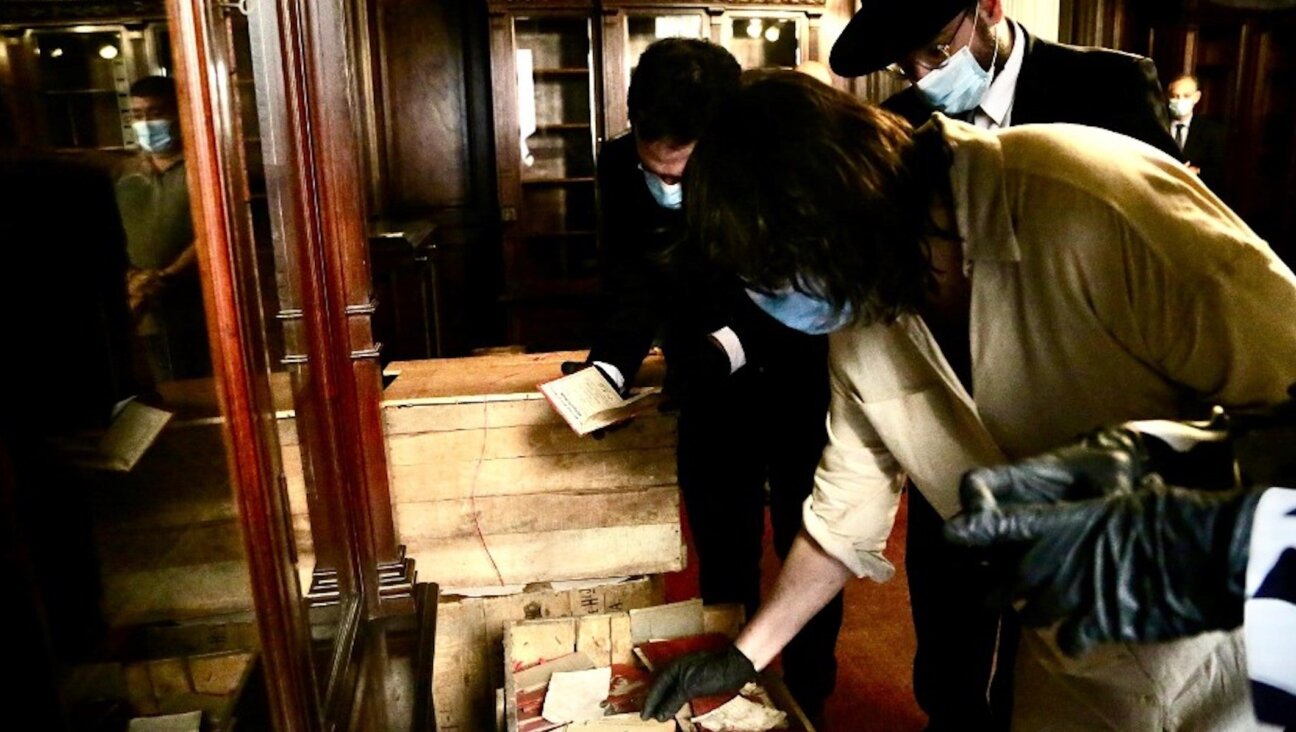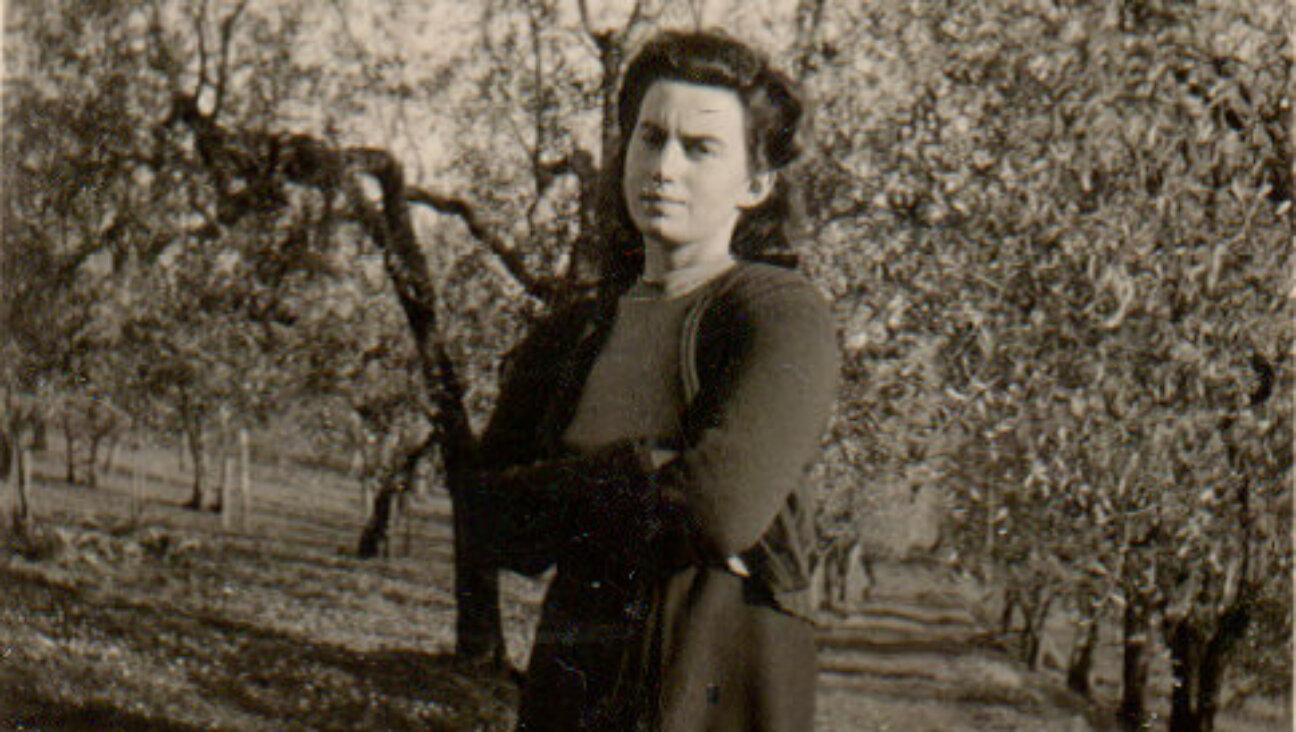A Historical Novel About Ruth, Minus The Sappiness
The Garden of Ruth
By Eva Etzioni-Halevy
Plume, 304 pages, $14.
Novels based on the Old Testament have become quite popular in the past 10 years. While the religious tone and the style tend to vary — some can be read as parables, others as Harlequin romances — one consistent thread has been the highly detectable feminist undercurrent. In books like Anita Diamant’s widely read “The Red Tent,” and Rebecca Kohn’s “The Gilded Chamber: A Novel of Queen Esther,” the writers use their creative license to surmise the female-centered universe of ancient times.
The latest incarnation of this genre is Eva Etzioni-Halevy’s “The Garden of Ruth,” a dual narrative that covers both the title character’s story and her great-granddaughter in-law’s uncovering of Ruth’s secret. But unlike its counterparts, the novel refrains from using conjecture to sculpt and polish a new batch of sheroes from the Torah. Etzioni-Halevy, who is a professor emeritus of political sociology at Bar-Ilan University in Israel and the author of “The Song of Hannah,” craftily mingles a well-researched setting with characters she chooses to examine rather than empower. The result is an occasionally syrupy, yet more often intriguing, telling of the story of Judaism’s most famous convert.
Ruth, a Moabite by birth, converted to Judaism after she married a Jew who had moved to her native land in order to escape famine. After he died, Ruth, in an act of distinguished devotion, followed her mother-in-law back to the land of Judah, where she planned to marry her deceased husband’s next of kin. Ruth ended up marrying Boaz, but only after a “Mr. So-and-So,” turned her down. Who was this Ploni-Almoni? And why wouldn’t he marry Ruth? These are the questions that Osnath, precocious teenager and niece of the prophet Samuel, is determined to answer during her visit to Bethlehem.
Etzioni-Halevy divides the book into two sections: The first is about the courtship of Osnath and Eliab, the brother of King David, as well as Osnath’s investigation of the unnamed man; the second is presented as Ruth’s scroll, written in first person, which explains the mystery behind this man as well as the subsequent cover-up.
Themes of romance, sexuality and survival rise up in both stories, which are rife with parallels. Both Osnath and Ruth are headstrong women who must navigate the codes restricting women at the time. Both fall hard and quick for the wrong guy, slow and steady for the right one. They both make use of their outsider status to make clear observations on the community surrounding them. And both have an unwavering devotion to the power of words.
In an interview posted on her Web site, Etzioni-Halevy said she performed an extensive amount of research about the details of the time and did her best to incorporate them seamlessly into the book. And while she couldn’t resist a dash of fairy tale here and there, her sturdy setting keeps the flimsier moments afloat. The dialogue, for example, cloys, heavy with “pray sirs.” One wonders why, if anachronisms are inevitable in projects of this sort, the author can’t settle upon a slightly more contemporary and less irritating lexicon. Still, the narration, though lacking the leaps and turns of more literary efforts, is pleasant and genuinely readable.
Etzioni-Halevy’s writing demonstrates a genuine curiosity in the motivations of women during this time, and her choice to fashion the novel as a bit of mystery helps provoke the reader’s curiosity, as well. Those who are well acquainted with the stories of the Torah, as well as those people whose bar or bat mitzvahs signaled the end of their relationship with the tales, will enjoy flipping through these pages. And although mostly fantasy, it is satisfying to compare the ancient struggles of women to those of today. The book is not a pep talk for the natural-fiber wearing, co-op shoppers, who often claim continuity with the ancient world. Instead, Ruth and Osnath are relatable, nuanced and curious women, making this fictional bridge to the Torah rewarding.
There is some speculation that the Book of Ruth was originally penned by a woman. The fact that the story is from the viewpoint of two women who partake in a strenuous journey in order to survive has made some scholars consider the text’s potential female provenance. For some, Naomi and Ruth’s acumen and boldness offer further proof.
While this will probably never be determined, Etzioni-Halevy’s novel is, in a way, a riff on this idea, creating a dialogue through which women of the past can be better contemplated.
Elissa Strauss is a writer and film producer living in New York City.
The Forward is free to read, but it isn’t free to produce

I hope you appreciated this article. Before you go, I’d like to ask you to please support the Forward.
Now more than ever, American Jews need independent news they can trust, with reporting driven by truth, not ideology. We serve you, not any ideological agenda.
At a time when other newsrooms are closing or cutting back, the Forward has removed its paywall and invested additional resources to report on the ground from Israel and around the U.S. on the impact of the war, rising antisemitism and polarized discourse.
This is a great time to support independent Jewish journalism you rely on. Make a gift today!
— Rachel Fishman Feddersen, Publisher and CEO
Support our mission to tell the Jewish story fully and fairly.
Most Popular
- 1

Fast Forward Ye debuts ‘Heil Hitler’ music video that includes a sample of a Hitler speech
- 2

Opinion It looks like Israel totally underestimated Trump
- 3

Culture Is Pope Leo Jewish? Ask his distant cousins — like me
- 4

Fast Forward Student suspended for ‘F— the Jews’ video defends himself on antisemitic podcast
In Case You Missed It
-

Fast Forward For the first time since Henry VIII created the role, a Jew will helm Hebrew studies at Cambridge
-

Fast Forward Argentine Supreme Court discovers over 80 boxes of forgotten Nazi documents
-

News In Edan Alexander’s hometown in New Jersey, months of fear and anguish give way to joy and relief
-

Fast Forward What’s next for suspended student who posted ‘F— the Jews’ video? An alt-right media tour
-
Shop the Forward Store
100% of profits support our journalism
Republish This Story
Please read before republishing
We’re happy to make this story available to republish for free, unless it originated with JTA, Haaretz or another publication (as indicated on the article) and as long as you follow our guidelines.
You must comply with the following:
- Credit the Forward
- Retain our pixel
- Preserve our canonical link in Google search
- Add a noindex tag in Google search
See our full guidelines for more information, and this guide for detail about canonical URLs.
To republish, copy the HTML by clicking on the yellow button to the right; it includes our tracking pixel, all paragraph styles and hyperlinks, the author byline and credit to the Forward. It does not include images; to avoid copyright violations, you must add them manually, following our guidelines. Please email us at [email protected], subject line “republish,” with any questions or to let us know what stories you’re picking up.















